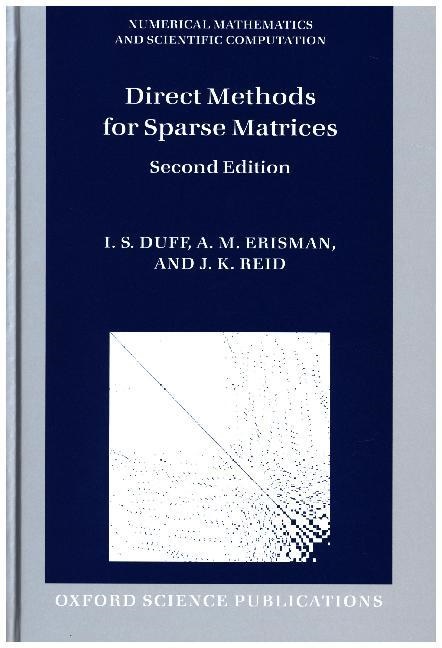En savoir plus
Zusatztext [T]his book is a well written and authoritative reference that should be of interest to anyone involved in the implementation of sparse LU factorization software Informationen zum Autor I. S. (Iain) Duff is an STFC Senior Fellow in the Scientific Computing Department at the STFC Rutherford Appleton Laboratory in Oxfordshire, England. He is also the Scientific Advisor for the Parallel Algorithms Group at CERFACS in Toulouse and is a Visiting Professor of Mathematics at the University of Strathclyde.J. K. (John) Reid is an Honorary Scientist at the STFC Rutherford Appleton Laboratory in Oxfordshire, England. He is also a Visiting Professor at the Shrivenham Campus of Cranfield University and is Convener of the ISO/IEC Fortran Committee. A. M. (Al) Erisman is the Executive in Residence in the School of Business, Government, and Economics at Seattle Pacific University and is executive editor of Ethix magazine ( ), which he co-founded with a colleague in 1998. Over the past 15 years he has lectured on five continents in areas of business, technology, mathematics, ethics, faith, and economic development. Klappentext The subject of sparse matrices has its root in such diverse fields as management science, power systems analysis, surveying, circuit theory, and structural analysis. Efficient use of sparsity is a key to solving large problems in many fields. This book provides both insight and answers for those attempting to solve these problems. Zusammenfassung The subject of sparse matrices has its root in such diverse fields as management science, power systems analysis, surveying, circuit theory, and structural analysis. Efficient use of sparsity is a key to solving large problems in many fields. This book provides both insight and answers for those attempting to solve these problems. Inhaltsverzeichnis 1: Introduction 2: Sparse matrices: storage schemes and simple operations 3: Gaussian elimination for dense matrices: the algebraic problem 4: Gaussian elimination for dense matrices: numerical considerations 5: Gaussian elimination for sparse matrices: an introduction 6: Reduction to block triangular form 7: Local pivotal strategies for sparse matrices 8: Ordering sparse matrices for band solution 9: Orderings based on dissection 10: Implementing Gaussian elimination without symbolic factorize 11: Implementing Gaussian elimination with symbolic factorize 12: Gaussian elimination using trees 13: Graphs for symmetric and unsymmetric matrices 14: The SOLVE phase 15: Other sparsity-oriented issues A: Matrix and vector norms B: Pictures of sparse matrices C: Solutions to selected exercises ...

